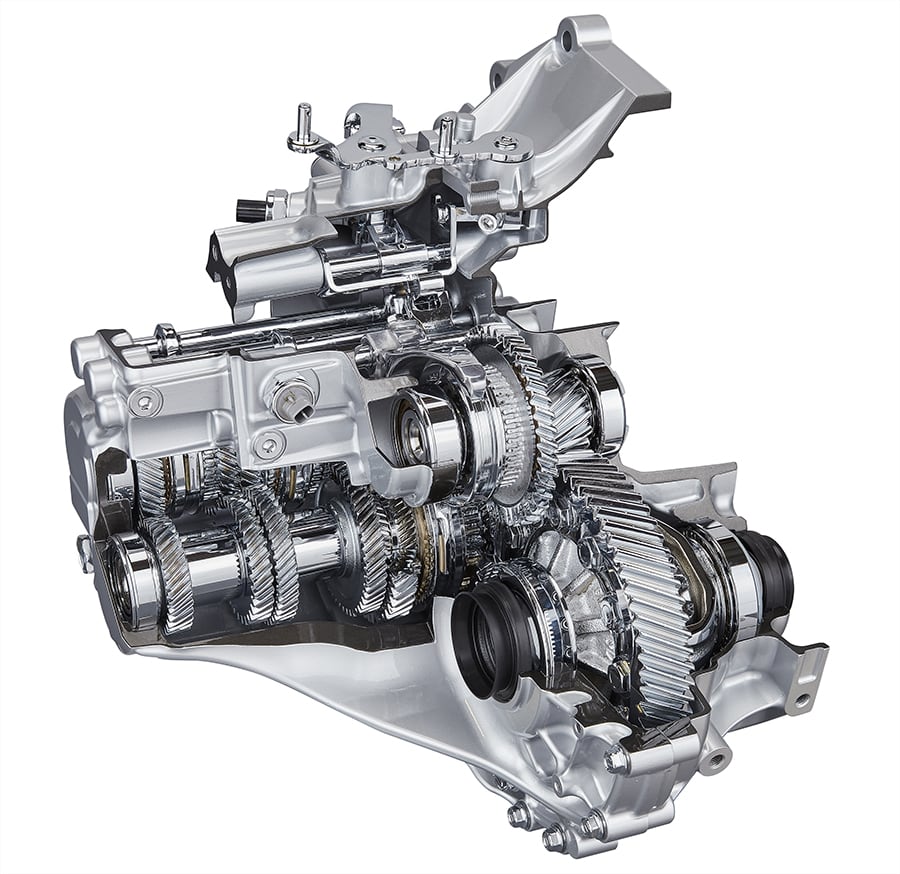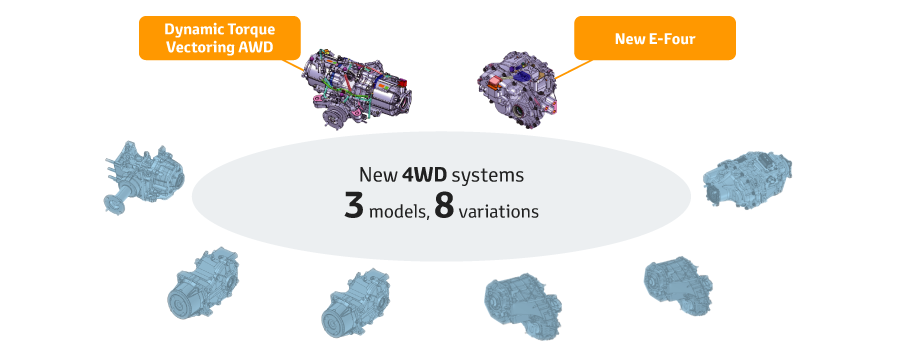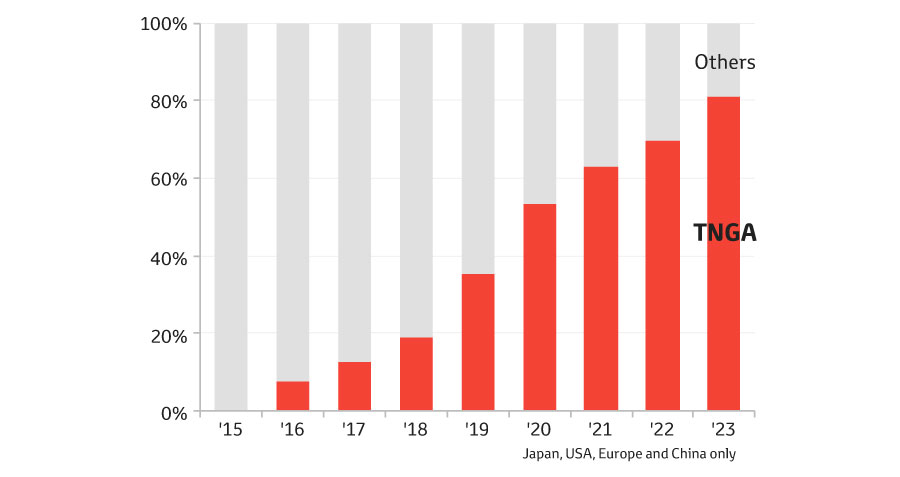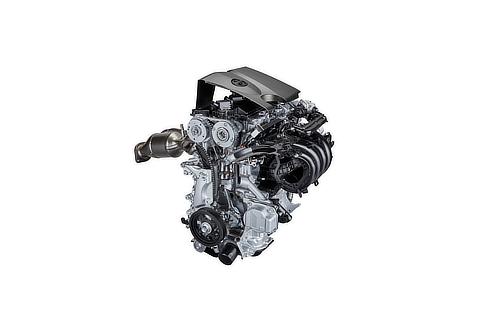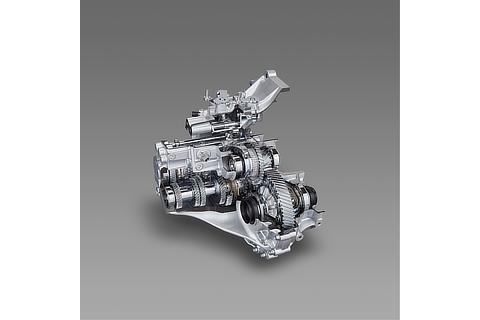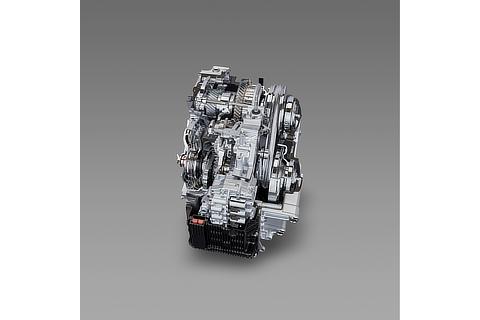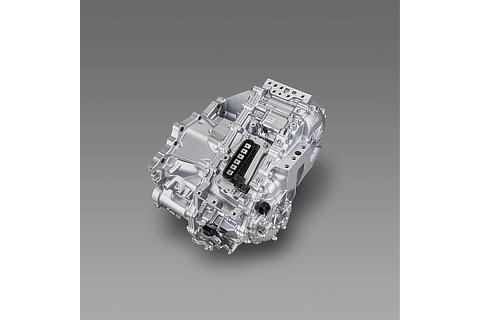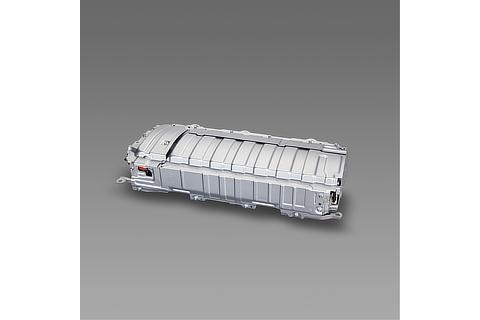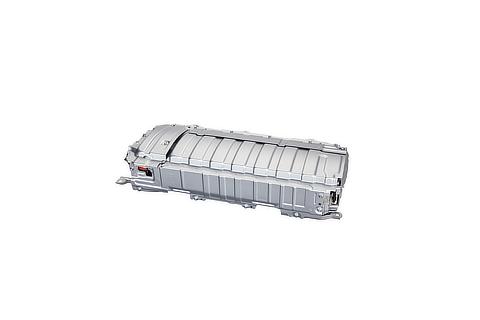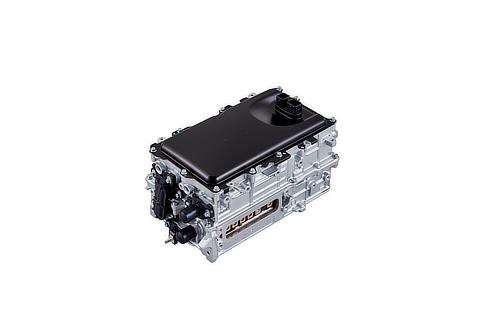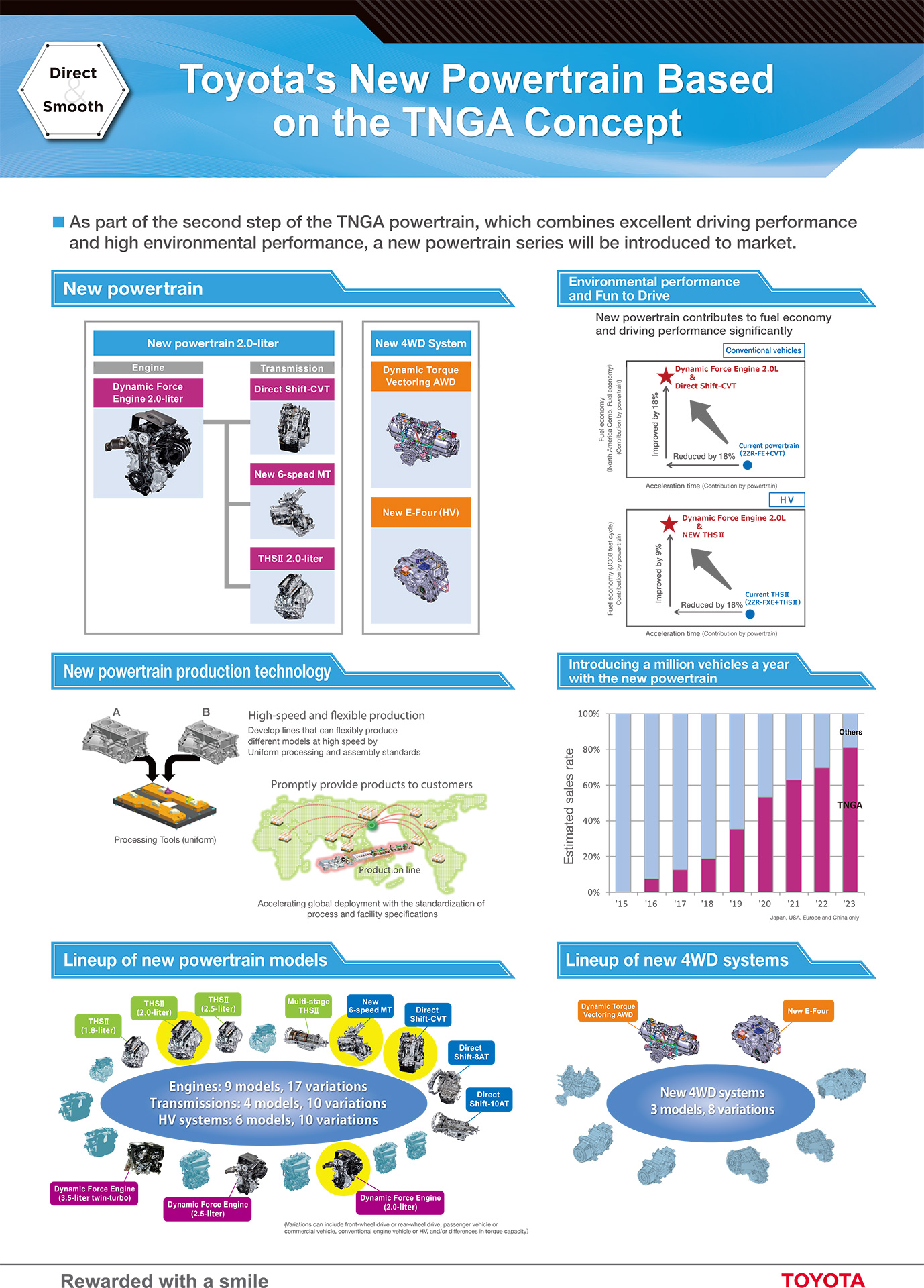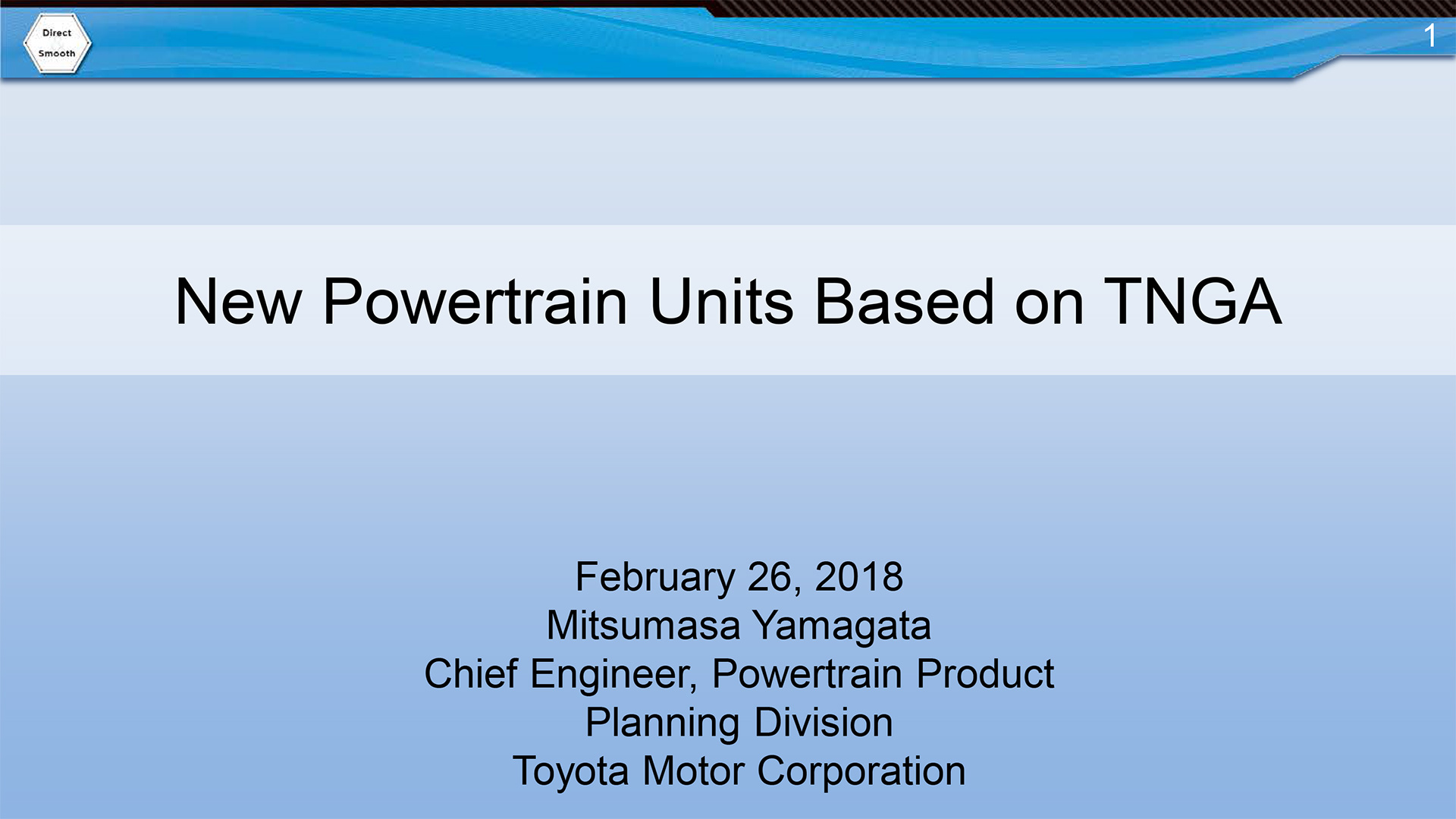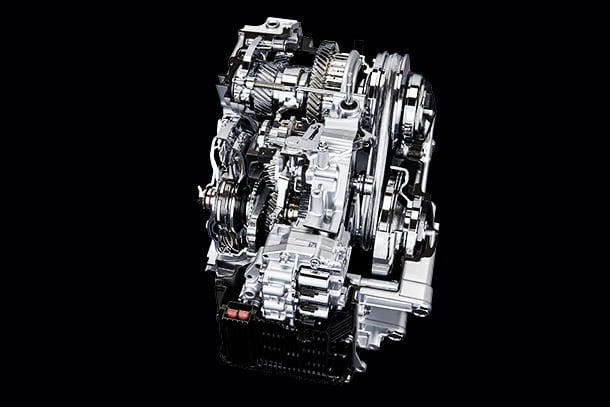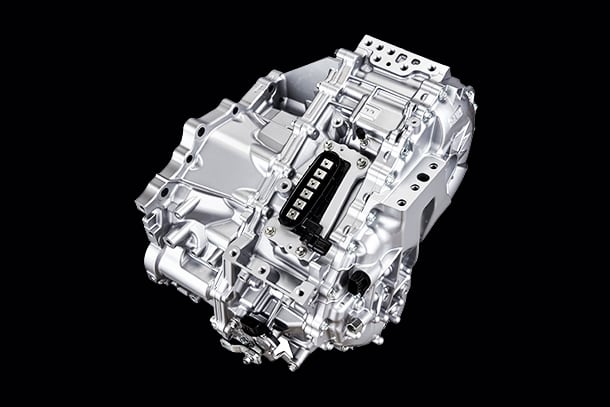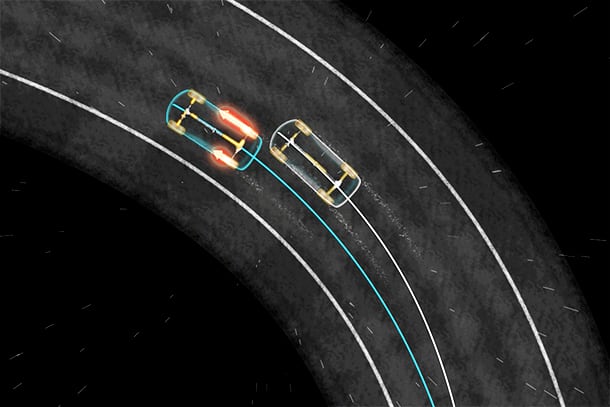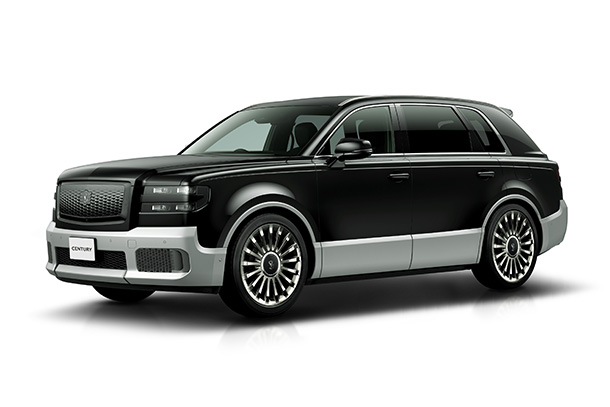Feb. 26, 2018
Features of Toyota's New Powertrain
Toyota announces that it has developed a new continuously variable transmission (CVT), 6-speed manual transmission, 2.0-liter engine, 2.0-liter hybrid system, and 4WD systems based on the Toyota New Global Architecture (TNGA), a development framework aimed at making ever-better cars. The new technologies offer both superb driving performance and high environmental performance.
The new continuously variable transmission features a launch gear, a world first, to significantly improve transmission efficiency at low speeds when compared to existing CVTs. It realizes both direct and smooth driving response to accelerator application, as well as superior fuel efficiency.
Click here for more information on the development of the new powertrain based on TNGA.
Direct Shift-CVT: A New Type of Continuously Variable Transmission
With the new structure which adopts launch gears, significant improvement of transmission efficiency and a 15% increase in ratio spread are realized.
Shift speed is improved by 20% due to the narrow belt angle and miniaturization of the pulley; improvement of shift control contributes to the realization of direct response driving.
New 6-speed Manual Transmission (6MT)
Top-grade* manual transmission that is lightweight and compact with implementation of a dedicated reverse gear synchronizer.
Manual transmission operation supported by electronic control, relieving driver burden.
*As of February 2018 (Toyota Motor Corporation)
2.0-liter Dynamic Force Engine, a New 2.0-liter Direct-injection, Inline 4-cylinder Gasoline Engine
The new engine realizes equal or greater power performance while realizing best-in-class fuel economy accomplished through the 2.5-liter Dynamic Force Engine and with Direct Shift-CVT.
Dynamic Force Engine 2.0-liter developed as a core engine of Toyota.
2.0-liter Toyota Hybrid System (THS II)
The new 2.0-liter system implements technologies that allow for a smaller, lighter, and more energy efficient structure. A 2.5-liter system was previously introduced in the redesigned Camry.
Lineup of new powertrain models
Regarding TNGA-based powertrains, Toyota has already announced plans to introduce 17 versions of nine engines, 10 versions of four transmissions, and 10 versions of six hybrid systems by the end of 2021. The new continuously variable transmission, 6-speed manual transmission, 2.0-liter engine, and 2.0-liter hybrid system represent four of the planned components.
New Dynamic Torque Vectoring AWD and E-Four 4WD Systems
With the aim of improving fuel efficiency and achieving high 4WD handling, stability, and off-road performance, two new 4WD systems used in gasoline engine vehicles and in hybrid vehicles were developed.
Lineup of new 4WD systems
Roll-out of New Powertrain Units
The powertrain units will not only contribute to improved environmental and driving performance of conventional gasoline engine vehicles, but the core technologies will be reflected in the performance improvement of electrified vehicles, including hybrid electric vehicles (HEVs), plug-in hybrid electric vehicles (PHEVs), battery electric vehicles (BEVs), and fuel cell electric vehicles (FCEVs). These technologies play a part in Toyota's pursuit of the popularization of electrified vehicles.
Within the next five-years to the end of 2023…
Approximately 80% or more of vehicles sold will feature new powertrain components, reducing CO2 emissions by 18% or more*
(Japan, the United States, Europe, and China)
Within the next five-years to the end of 2023, Toyota aims to have TNGA-based powertrain units installed in approximately 80 percent of Toyota-brand and Lexus-brand vehicles sold annually in Japan, the United States, Europe, and China. Toyota forecasts that the TNGA-based powertrain units alone will improve fuel efficiency enough to reduce CO2 emissions from Toyota vehicles by more than 18 percent.
Estimated sales rate
*Comparison of average amount of CO2 emitted by Toyota and Lexus vehicles sold in 2015 in Japan, the United States, Europe, and China and the average amount of CO2 emitted by Toyota and Lexus vehicles planned to be sold in 2023 in Japan, the United States, Europe, and China, including vehicles equipped with the newly developed powertrain units. Estimated CO2 reduction contribution made only by newly developed powertrain units based on certified data in each country or region.

